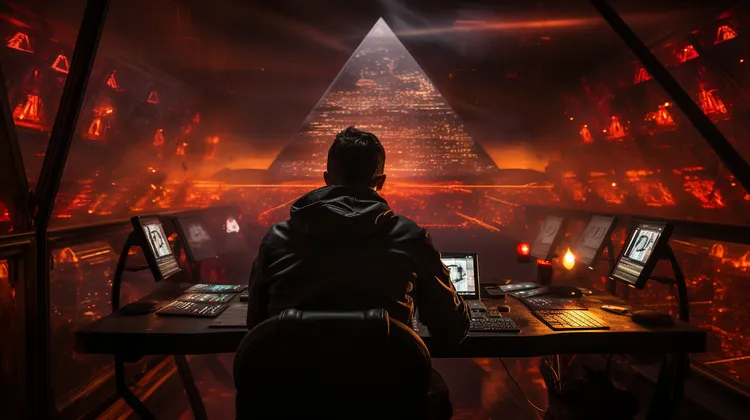The world of digital assets is forever in flux, and among the various types of assets, Non-Fungible Tokens (NFTs) have had one of the most rollercoaster-like trajectories in recent times. After experiencing a massive boom in popularity and value, the NFT market has faced a significant cooldown period. There are emerging signs that an NFT comeback may be on the horizon.
NFTs are unique digital tokens that represent ownership of a specific item or piece of content, typically linked with digital art, music, or collectibles. Unlike cryptocurrencies such as Bitcoin or Ethereum, which are fungible and can be exchanged on a one-to-one basis, NFTs are one-of-a-kind and provide buyers with something that cannot be replicated: ownership of the ‘original’ work.
The initial excitement around NFTs was partly driven by their novelty and the dizzying prices some pieces fetched at auction. Headlines regularly featured news of digital artworks selling for millions of dollars, which drew both creators and investors into the burgeoning space. Major auction houses, galleries, and artists all wanted a piece of the action.
But as with many emergent technologies, the reality started to set in. The market became oversaturated with content of questionable value, and the speculative bubble began to deflate. Prices dropped, trading volumes waned, and with the general public’s interest waning, many started to dismiss NFTs as a passing fad.
Now, after the storm, there is a brewing sense of optimism among the still-engaged NFT community. Artists, collectors, and technologists alike argue that the underlying technology of NFTs — blockchain — continues to hold tremendous potential for revolutionizing ownership and authenticity in the digital realm. They are making a case for real-world utility beyond just collectibles and art.
An indicator of this potential comeback is the steady integration of NFTs into various industries. The music industry, for one, is experimenting with NFTs as a means of giving artists more control over their music and ensuring they get fairer compensation. Musicians are issuing limited edition releases, special access, and other exclusive fan experiences as NFTs.
Gaming is a space where NFTs may shine. Video games and virtual worlds with economies based on NFTs are gaining traction. The idea that players could own and trade in-game items with real-world value is compelling. This provides an entirely new monetization method for developers and an enhanced experience for gamers who can retain value for their time and effort invested in the game.
Another sign of recovery is seen in the art sector, with more sophisticated approaches to NFTs emerging. There is a focus on quality over quantity and fostering a sustainable ecosystem for digital artists. This includes better curation, community building, and artist support, intending to create longer-term value for NFT art.
The development of new platforms and technologies is helping address concerns around the environmental impact of NFTs — one of the major criticisms during their initial boom. More energy-efficient blockchain solutions and second-layer technologies are being adopted, which help alleviate these environmental concerns and could lead to broader acceptance.
Big brands and corporations have also not shied away from exploring NFTs. Major fashion brands, sports franchises, and even traditional media companies are looking into how they can leverage NFTs to engage with audiences, offer exclusive content, and create new revenue streams.
Besides, the legal landscape concerning NFTs is starting to take shape, giving clearer guidelines on ownership, copyrights, and intellectual property rights. This clarity may provide a more solid foundation for both creators and investors to engage with the market.
Investment in the infrastructure and technology that underpins NFTs is still significant. Venture capitalists, tech companies, and innovative startups are pouring resources into building the next generation of platforms that could address current limitations and open up new use cases for NFTs.
Despite these positive trends, a fair amount of skepticism remains. NFTs still need to overcome significant hurdles such as market fluctuations, speculative trading, and the perception of being an over-hyped commodity without intrinsic value. It’s also critical for the NFT space to prioritize security due to the high-profile scams and thefts that have plagued the sector.
While the spotlight on NFTs may have dimmed compared to the height of the frenzy, the energy on the ground has not entirely dissipated. The integration into various industries, the technological adjustments being made, and the continuous commitment from artists and innovators suggest that NFTs may indeed be gearing up for a comeback.
Only time will tell if this is the calm before a new rise or simply a stabilization period for an industry finding its niche. What’s clear is that NFTs have altered the debate on digital ownership and value significantly — an impact that is likely to resonate regardless of the market’s future direction. The potential for a resurgence is there, built on stronger foundations than the first wave, but whether a full comeback materializes depends on the ability of the NFT community to learn from past excesses and focus on sustainable growth.




Stoked to see artists getting their due with NFTs. Cheers to innovation! 🍻🎭
The practical use of NFTs beyond hype is genuinely inspiring. Real value creation!